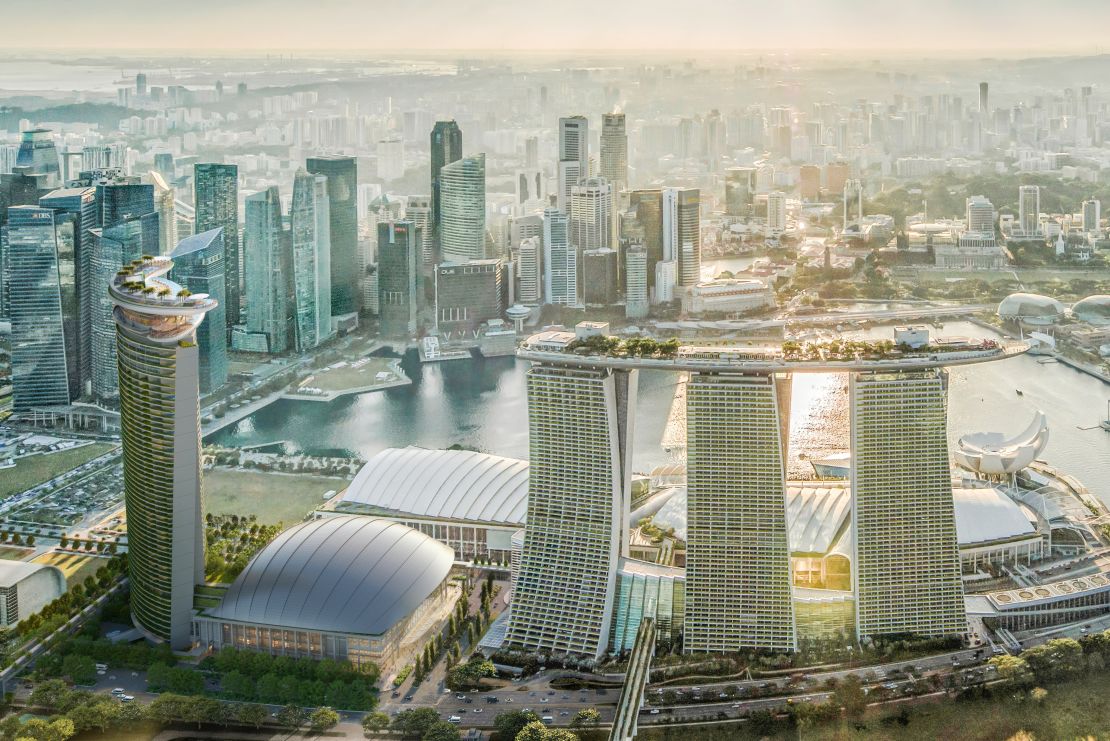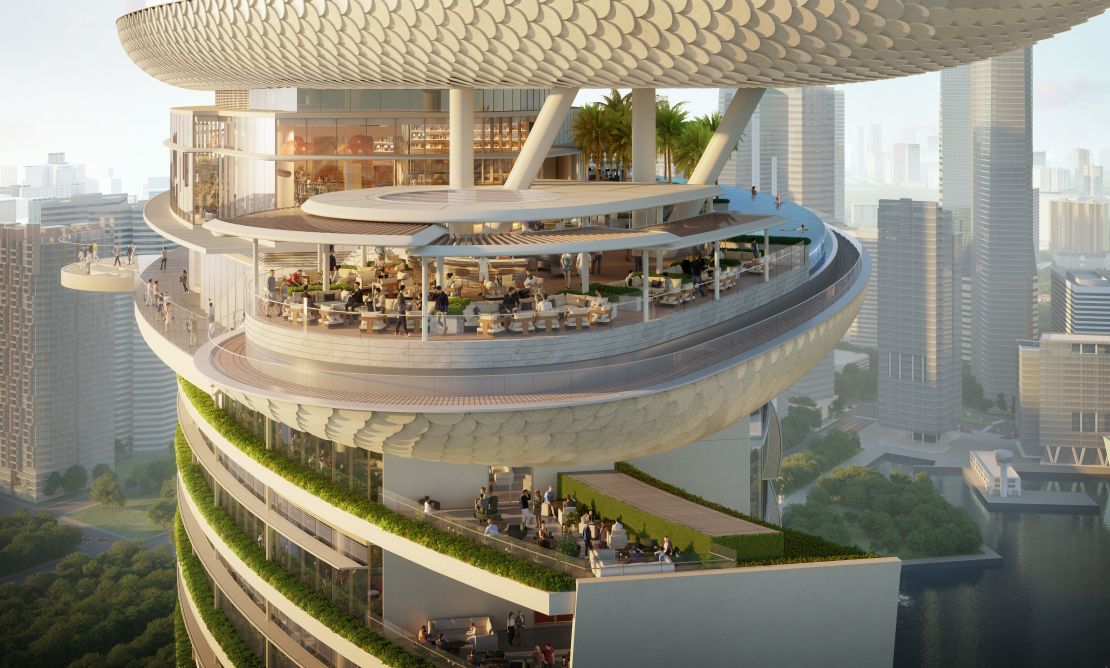Singapore
CNN
—
With three 650-foot-tall skyscrapers connected across the top by a boat-like skybridge — and an Instagram-famous infinity pool — Marina Bay Sands has given Singapore one of Asia’s most recognizable skylines since opening in 2011.
So, when the resort’s original architect was invited to design a new, fourth tower for the site, his brief from the country’s government was clear: Don’t mess with a national symbol.
“The (Urban Redevelopment) Authority repeatedly said, ‘This is our icon; our people of Singapore love this, and we cannot do anything that’s going to compromise it,” said Israeli architect Moshe Safdie, referencing the country’s urban planning agency. “And that was very much on our minds, as well: How to make something that has its own identity but is very complementary.”
The 87-year-old said he only entertained the idea of extending the complex’s soaring skybridge to meet the fourth tower “for a few minutes.” Instead, his new 55-floor skyscraper, which broke ground on Tuesday, sits apart from its famous neighbors on an adjacent plot of land.

Connecting the towers would have “really compromised the existing scheme and spanning across just seemed unwise,” Safdie said, comparing his new high-rise to the dot of an exclamation point. “It would be just more of the same, whereas we really wanted to create something.”
The $8-billion expansion plan is a testament to the commercial success of Marina Bay Sands, which contains a hotel, mall, convention center and one of only two licensed casinos in the southeast Asian city-state. The US hospitality giant behind the resort, Las Vegas Sands, said the property attracted 38 million visitors and 2.19 billion Singapore dollars ($1.7 billion) in business spending last year alone.
Safdie’s new tower will expand the hotel’s capacity by 570 suites, while adding more luxury retail and meeting space. The architect’s eponymous firm has also designed an adjoining entertainment venue for the site.
When the Massachusetts-based architect unveiled initial plans for the expansion in 2019, this 15,000-seat venue was situated on the far side of the fourth tower. But about a year ago, with progress stalled by Covid-19-related delays, Safdie proposed “flipping” the scheme, lodging the arena between the new skyscraper and the original three — and in turn extending the distance between them.
“I came to the conclusion that it just didn’t feel right, and that there (wasn’t) enough space between the towers,” he explained. “It meant a lot of reworking of the access and transportation … (but it) was a quantum jump improvement.”
The architect nonetheless wanted to create a consistent design language for the complex. For one, the new building’s boat-like roof — dubbed “Skyloop,” it will host an observation deck, restaurants and public gardens, as well as cabanas and infinity pools for hotel guests — clearly nods to the original structure’s iconic roof. “The buildings look related,” Safdie said. “They’re in the same family.”

At Tuesday’s groundbreaking ceremony, Singaporean Prime Minister Lawrence Wong joined Safdie on stage to mark the start of construction with a symbolic shoveling of sand. Addressing guests at the event, Wong said the new structure “will refresh our skyline.”
The final design was, however, met with mixed reviews among Singaporeans online. On social media platform Reddit, the new tower was accused of being “out of place” and sticking out “like a sore thumb,” while being compared to a “huge dehumidifier” or a “fourth person lurking” next to its three neighbors.
Other users were more sympathetic, suggesting that the tower will eventually “blend in naturally” with the other skyscrapers being planned in the district — which was built on 660 hectares (1,631 acres) of land reclaimed from the Singapore Strait — over the coming decades.
“When it’s all said and done, people will feel it’s always been there,” Safdie argued. “And they will love it as much as they love this building, if not more, because I think the sum total of the two together is greater than the individual parts.”


